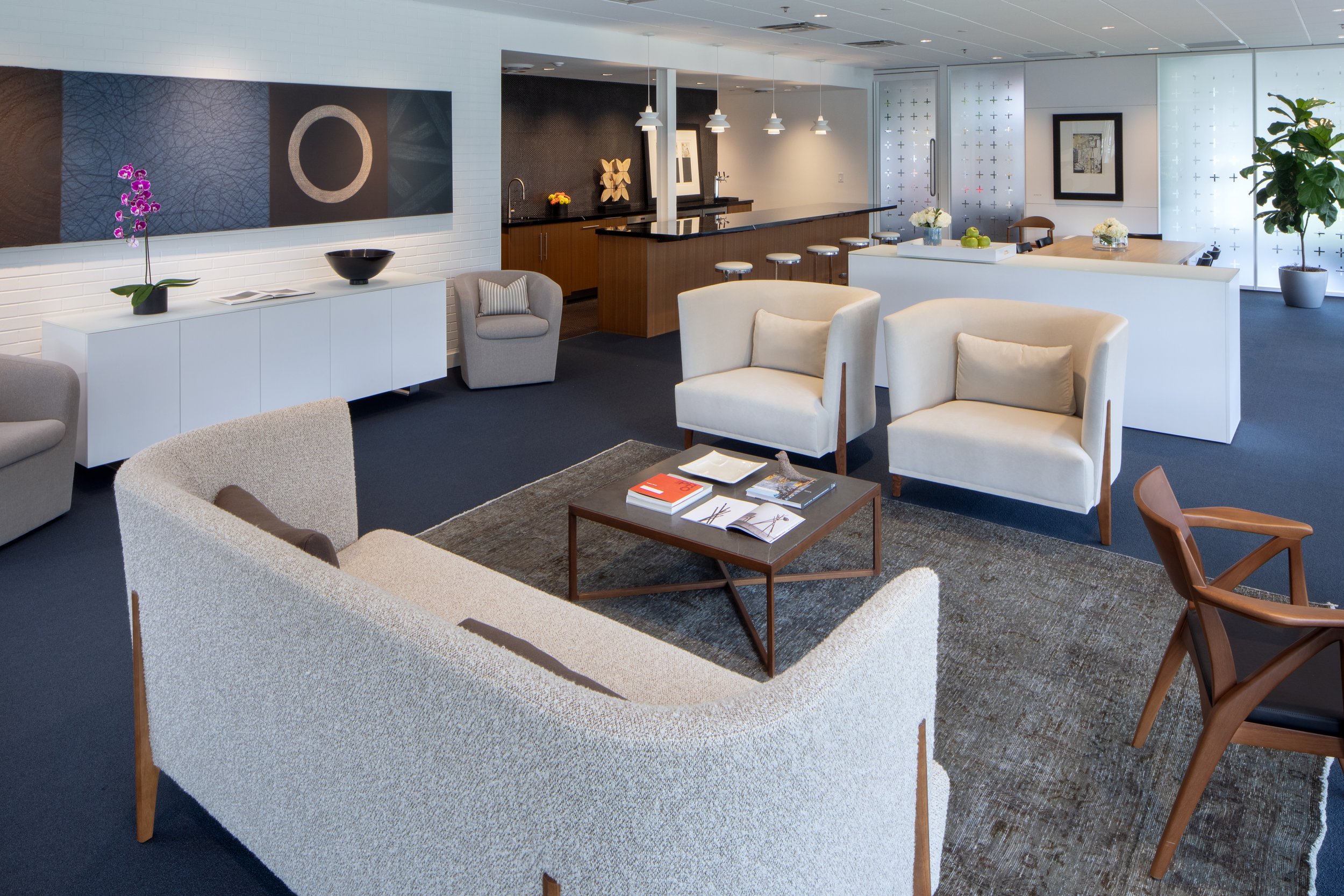3 reasons why workplace design really matters.
Stale walls. Cubicles. Commercial carpet. Does any of that sound familiar? The traditional workplace has long been defined as a place where you come in, sit in a sea of cubicles, and plug away. Although some organizations still include cubicles, workplace transformations have become more necessary in today’s post-pandemic world.
Stale walls. Cubicles. Commercial carpet. Does any of that sound familiar? The traditional workplace has long been defined as a place where you come in, sit in a sea of cubicles, and plug away. Although some organizations still include cubicles, workplace transformations have become more necessary in today’s post-pandemic world. The office’s role has changed tremendously; it is now seen as part of the process for new talent to review before choosing to work for a company. Companies like Corporate Environments plan spaces that serve as both an environment to inspire and unleash employees’ best and a place where people choose to be. From Healthcare to Higher Education, workspace design has been at the forefront of many organizations’ goals. Many offices have become workplaces where employees are not at a desk for hours on end; now, there are breakout areas where employees can relieve stress, café areas to have a snack, and communal areas to socialize with colleagues. Chances are, when a new client or a potential talent walks in, they take a moment to scan the room and form a first impression. First impressions matter, especially when attracting employees, clients and building trust. The workplace is a powerful tool that tells the story of a company, it says a lot about the company culture. What story does your workplace tell?
When it comes to having functional working space, many people often forget the intent behind their workspace, from art selection to furniture placement- It all matters. So why is it that companies are starting to invest and prioritize workplace design now more than ever before? What has pushed the shift in how and where we work? The answer is simple: workplace design aims to better serve its employees because the workplace is a destination- a destination with an experience. The workplace plays a vital role in providing professional development, retaining and attracting employees, and fostering a company’s culture.
Reason number one: Cultivating professional development.
Nowadays, the expectations of providing professional development in the workplace have risen. There has been a high demand for continuous training to help employees enhance and refine their technical skills. Businesses want to offer different working spaces with various features to accommodate employees and guests during long workshops. With the new hybrid working model, many employees are working on and offsite making it is essential to integrate technology in these high-trafficked areas. For example, DIRTT provides various solutions to incorporate technology hardware into the design of the workplace. This solution comes with different display options to help support the workforce and improve employee engagement.
The need for in person seminars, lunch-n-learns, and training has led to many companies reevaluating and redesigning their workspaces to provide staff with a more functional design. As the saying goes, great employees deserve an excellent workplace design. To further equip current employees, the office design should provide modular furniture such as whiteboards with casters, chairs, ottomans, and laptop tables that are easily moved to create an adaptable learning environment. If the workplace screams dull, no one would be thrilled to show up. If people aren’t energized by their environment, what kind of work product will result from their efforts? The reason why workplace design matters is to serve employees.
Reason number two: Attracting and retaining talent.
It takes mere seconds to form a first impression. As we have all experienced, first impressions are tough to redo, so having the right design the first time is important. The most recent workplace designs include soft seating, warm lighting, biophilia, art, and technology-based furniture. There are many designs organizations can utilize in their workplace to differentiate themselves from competitors. Having height adjustable desks, ergonomic office chairs such as the Knoll Regeneration chair, and a variety of different working areas demonstrates values of putting employee welfare first. A combination of open office areas as well as privacy/quiet areas provide opportunities for employees to diversify their day and promote areas that best suits their project needs. When you keep and care for employees, your customers will be better catered to as well. As generations are transitioning in an out of the workforce, the priorities of attracting new and top talent are shifting and worth investing in. Just consider the impact it will have on employee’s wellbeing, productivity, and relationships with clients.
Reason number three: Fostering work culture.
Have you ever worked for a company where the work culture was non-existent? Yeah, we all have one company that pops into our minds. The physical work environment affects the way people interact with each other, their performance, and the overall cultural ambiance. Newer generations consider the workplace environment a top priority when deciding to work for a company. According to FreeOfficeFinder, a third of office workers in the millennial age group are willing to sacrifice a higher salary for a positive workplace that motivates and inspires. A pretty office will just be a pretty office, offering employees a sense of belonging goes much further- people want to feel seen, heard, and cared for by employers. Providing spaces where employees can build connections that enhance ideas creates an overall sense of team collaboration and accomplishment. Using spaces that are multi-faceted, such as café areas, yoga/exercise areas, and collaboration spaces cultivate camaraderie. Designing for a “we” environment will promote a positive work culture.
Designing for a “we” environment matters because the dark days in cubicle office spaces are gone. Offices design is becoming a branding opportunity to cultivate, nurture, attract, and retain employees. When the workplace serves its employees, the employees can best serve their clients, boost relationships, sales, and productivity.




